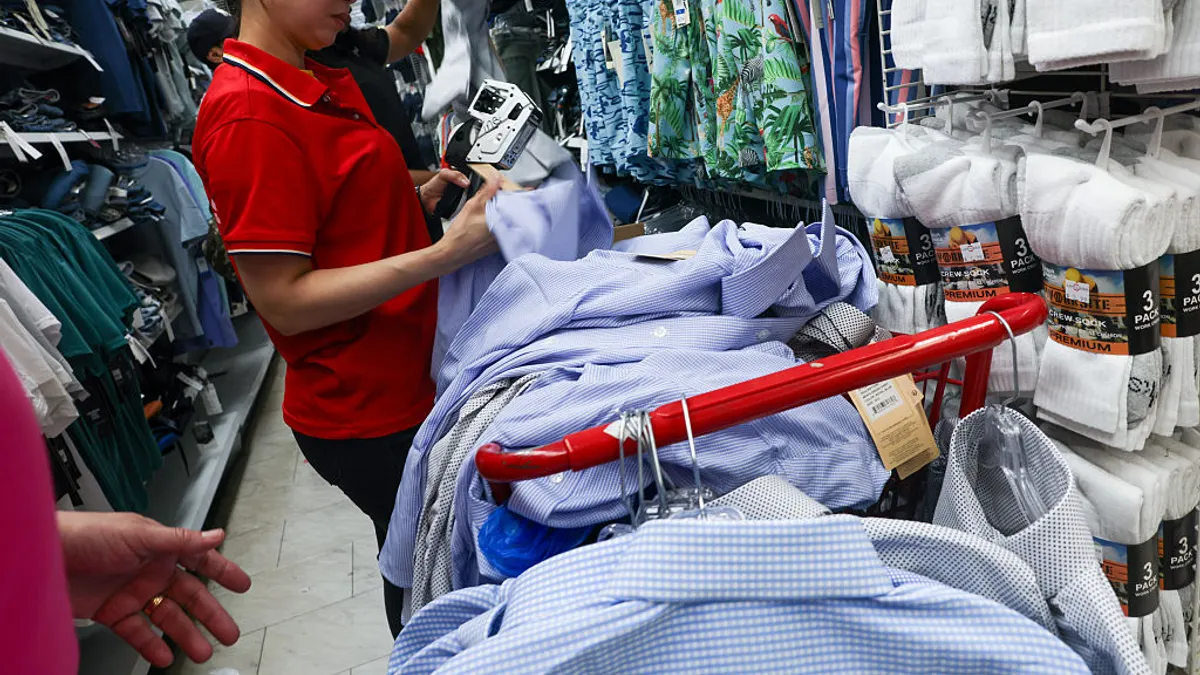Nearly half of America’s workforce — an estimated 76 million women — feel that their well-being is on the decline.
A recent survey by Guardian indicated while 93% of women said mental health is important to their wellness, only 35% rated their mental health as “very good” or “excellent.” Even fewer women in the 18 to 29 cohort — only 15% — said the same.
What gives? Researchers say the problem is too many demands on women, from money-related issues to caregiving responsibilities, to the intersection of the two.
Only 29% of women said they are very good or excellent at managing their finances, compared to 37% of men. “Financial health drives overall well-being — it really has an outsized impact on overall well-being, and people don’t necessarily think about that,” Gene Lanzoni, head of enterprise content told HR Dive.
“And we know financial challenges are particularly pronounced for women who are caregivers whether they’re caring for elderly relatives or whether they’re caring for small children,” Lanzoni added.
Here’s what HR needs to know about the state of women in the workplace, and what HR can do to improve half their workforce’s outcomes and business productivity.
The problems plaguing women
Of the respondents to Guardian’s survey, 38% of caregivers said their family is living paycheck to paycheck; forty-two percent of single mothers said the same.
“Money and finances, cost of living, mental health, paying off debt, saving for retirement and housing costs were all things that women particularly mentioned as being major stressors,” Lanzoni highlighted.
Analysis showed that while men typically had $11,000 in emergency savings, women only had $6,500 in their emergency fund.
Researchers also suggested that the double strain of being a caregiver — both emotional and financial — led to worse physical health. They highlighted, for example, that women were more likely than men to skip medical care due to cost.
“While both men and women face stress, uncertainty and even sometimes turmoil in their life, the impacts seem to be more profound for women,” Lanzoni said.
How HR can help women workers thrive
Outside of adjusting compensation and benefits packages for workers — especially in a year when HR’s hands may be tied, financially — small, free, workplace culture tweaks are an option for improving women’s health outcomes.
“Normalizing conversations around the topics that are often shrouded in silence can help make them less intimidating,” Lanzoni said. “Women can [then] talk about things like fertility challenges, postpartum depression, menopause, elderly caregiving, [and] being a single working mom.”
Erasing the stigma around these conversations is a key starting point, Lanzoni said.
Another workplace culture tweak is championing flexibility. “There are so many great learnings that we have from the pandemic in terms of what employers were doing — and in some cases, forced to do,” Lanzoni said.
Outside of Guardian’s report, research has continually supported this. A 2022 report from Care.com and Mother Honestly indicated that women benefit greatly from flexibility. Conversely, a Lean In executive told HR Dive that men benefit disproportionately from on-site work due to gendered norms.
Increasing total rewards, such as fertility or menopause benefits, could help combat women’s attrition from the workforce, Lanzoni said.
Based on the report’s findings about women’s financial stressors, Lanzoni additionally suggested supplemental health insurance policies to aid with out-of-pocket costs, medical care-related lodging expenses, accidents and critical illness to retain women. Touching on the mental health aspect of the report, he also spotlighted employee assistance programs.
Mainly, the most concrete way to help women saddled with caregiving responsibilities would be to provide paid leave, Lanzoni suggested.
“Policies like paid leave become really important, because we have federal laws like the FMLA [but] that’s really for job protection,” Lanzoni said, adding that some states are trying to fill in that gap.
“So many employers, in states where there is no law for paid family and medical leave, are implementing policies to allow for parental bonding leave and family caregiving leave,” he said, adding that it would be a dealbreaker for certain groups, such as Gen Z, to not offer such a benefit.
Overall, in offering best practices for HR to address the problems facing women workers, Lanzoni expressed concern around the downward data trend for women’s well-being. “That's something I’m sure we’d all like to see reverse,” he said.
Correction: A previous version of this article misstated Gene Lanzoni's title. The article has been updated.























